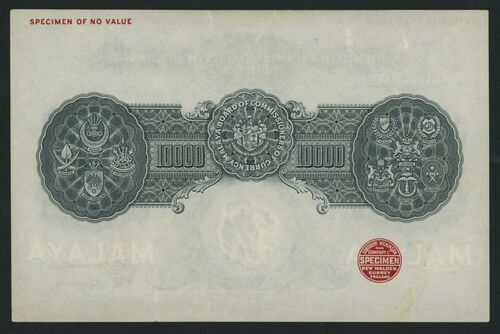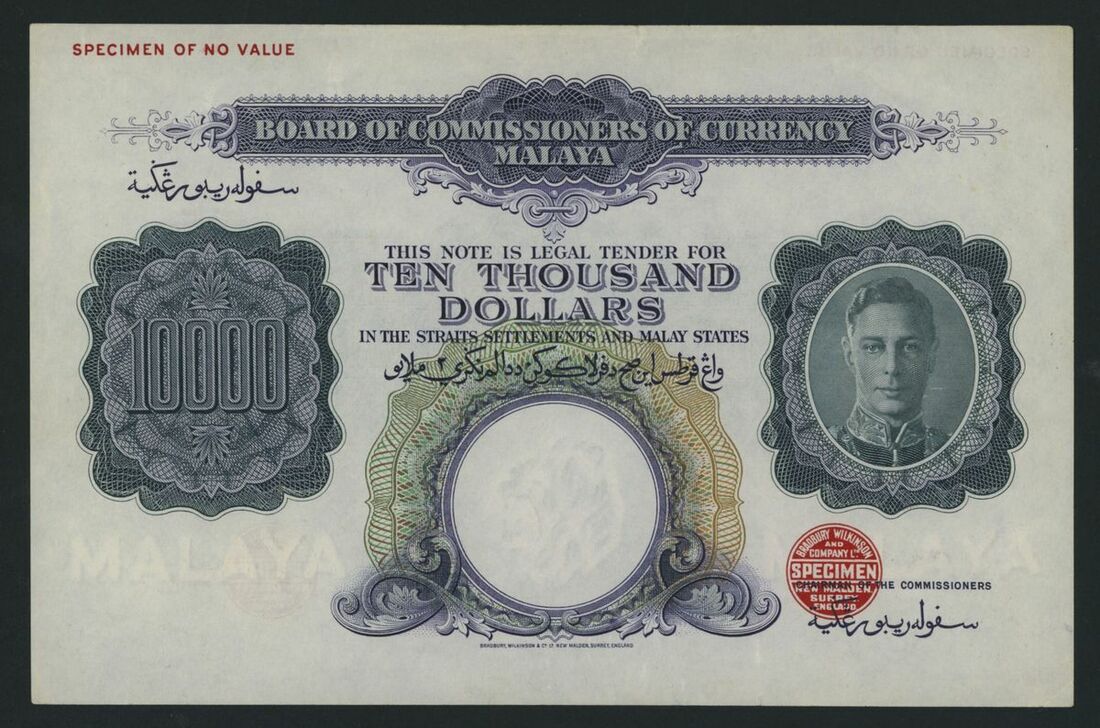Auction: 24009 - World Banknotes
Lot: 329
(x) Board of Commissioners of Currency, Malaya, colour trial specimen 10,000 Dollars, ND (1942),
in the late 1930s, British Malaya confronted a fragmented currency system, with various banks issuing their own notes, resulting in confusion and inefficiencies in financial transactions. As the region's economy grew, the necessity for a unified monetary authority became increasingly clear. In 1938, this need culminated in the Malaya Currency Ordinance, which formally established the Board of Commissioners of Currency, Malaya. The Board's primary goal was to consolidate currency issuance under a single entity, ensuring that the currency in circulation was both reliable and effective. At the forefront of this initiative was Sir Basil Blackett, appointed as the first Commissioner of Currency. An experienced administrator, Blackett possessed a deep understanding of colonial economics and envisioned a monetary system that would unify the currency while also reflecting the stability essential for commerce. Under his leadership, the Board began issuing notes that symbolised the strength of Malaya's economy. Blackett implemented policies regulating currency issuance, ensuring that each note was backed by adequate reserves, which in turn fostered trust among both citizens and financial institutions. He recognised the importance of facilitating transactions between banks, allowing the economy to thrive amidst increasing complexity. However, just as the Board began to gain traction, the outbreak of World War II dramatically altered the economic landscape. The Japanese invasion in 1942 brought unprecedented challenges, disrupting the financial system. Despite this, the principles and policies established by Blackett continued to influence how currency was perceived and utilised, even during this turbulent period. The story of the Board of Commissioners of Currency, along with Sir Basil Blackett's vision and leadership, is a fascinating chapter in the monetary history of Malaya. It reflects the interplay of governance, economic ambition, and the pursuit of stability during a time of uncertainty. The notes issued during this era remain historical symbols of an evolving economic landscape in a region on the cusp of transformation. Among these, the $10,000 note stands out as the highest denomination issued, serving as a flagship of this monetary journey and representing the pinnacle of ambition and achievement within the Board's legacy,
(Pick 17cts, KNB 17CT, BNB 118cts), in PMG holder...
Subject to 5% tax on Hammer Price in addition to 20% VAT on Buyer’s Premium.
Estimate
£50,000 to £80,000







